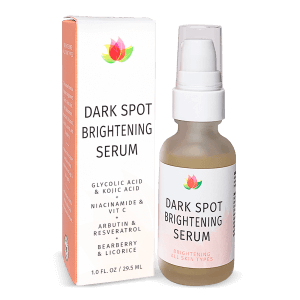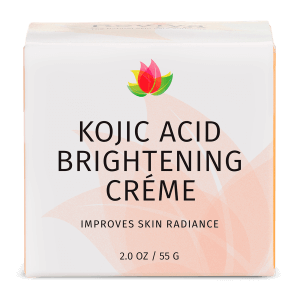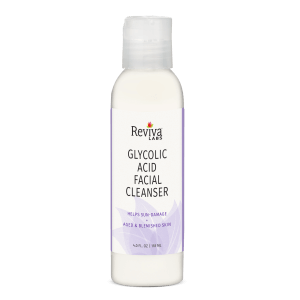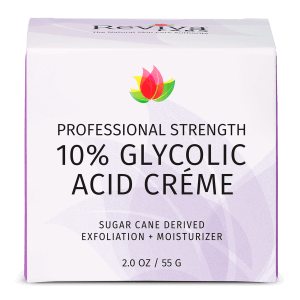Natural, Reviva Labs, Skin Care
Understanding Melasma: Causes, Treatment, and Prevention
Melasma is a common pigmentation disorder that affects many individuals, particularly women with darker skin tones. It manifests as dark patches or spots on the face, primarily on areas such as the cheeks, forehead, and upper lip. Although melasma is not physically harmful, it can have a significant impact on a person’s self-esteem and quality of life.
What Causes Melasma?
The exact cause of melasma is not fully understood, but research suggests that it is a result of the malfunctioning of melanocytes, the cells responsible for producing skin pigment. Several factors contribute to the development of melasma, including:
1. Sun Exposure
Exposure to ultraviolet (UV) rays from the sun is a major trigger for melasma. Sunlight stimulates the production of melanin, the pigment that gives color to our skin. In individuals with melasma, excessive sun exposure can lead to the overproduction of melanin in certain areas, resulting in the formation of dark patches.
2. Hormonal Changes
Hormonal changes play a significant role in the development of melasma, particularly in women. Pregnancy, hormonal medications such as birth control pills, and hormone replacement therapy can all trigger melasma. The increased levels of estrogen and progesterone during pregnancy, for example, can stimulate the production of melanin, leading to the formation of dark patches on the face.
3. Genetics
Genetic factors also contribute to the development of melasma. If close relatives, such as parents or siblings, have melasma, you may be more susceptible to developing the condition. Certain genetic variations can make individuals more prone to excessive pigmentation in response to triggers like sun exposure or hormonal changes.
4. Skin Type
Melasma is more common in individuals with darker skin tones, particularly those of Hispanic, Asian, and African descent. People with darker skin have more active melanocytes, which can produce more melanin when stimulated. This increased melanin production makes them more susceptible to developing melasma.
5. Other Triggers
Other factors that can trigger melasma include certain medications, such as anti-seizure drugs and medications that increase sensitivity to sunlight. Additionally, skin care products that irritate the skin can exacerbate melasma symptoms.

Treatment Options for Melasma
While there is currently no cure for melasma, various treatment options can help manage the condition and reduce the appearance of dark patches on the skin. It is important to note that treatment responses can vary, and melasma may recur even after successful treatment. Here are some common treatment options:
1. Sun Protection
One of the fundamental aspects of treating melasma is sun protection. Since sun exposure can trigger melasma and worsen existing patches, it is crucial to protect your skin from harmful UV rays. Here are some sun protection measures to incorporate into your daily routine:
- Wear a wide-brimmed hat and protective clothing when outdoors.
- Seek shade during peak sun hours, typically between 10 a.m. and 4 p.m.
- Apply a broad-spectrum sunscreen with a Sun Protection Factor (SPF) of 30 or higher to all exposed skin. Look for sunscreens that contain zinc oxide, titanium dioxide, or iron oxide, as these ingredients provide additional protection against visible light.
2. Topical Medications
Topical medications are commonly used as a first-line treatment for melasma. These medications are applied directly to the affected areas and work to lighten the skin and reduce pigmentation. Some of the most commonly prescribed topical medications for melasma include:
- Hydroquinone: A skin lightening agent that inhibits the production of melanin.
- Retinoids: Derived from vitamin A, retinoids increase cell turnover and promote the fading of dark patches.
- Corticosteroids: These anti-inflammatory medications can help reduce skin inflammation associated with melasma.
In many cases, a combination of these topical medications may be prescribed to achieve optimal results. It is essential to follow your dermatologist’s instructions regarding the application and duration of use for these medications.
3. Chemical Peels
Chemical peels involve the application of a chemical solution to the skin, which exfoliates the top layers and encourages the growth of new, healthier skin. This procedure can help reduce the appearance of melasma by removing the pigmented cells on the surface. Chemical peels can vary in strength, and your dermatologist will determine the most suitable type and concentration for your specific needs.
4. Laser and Light Therapies
Laser and light therapies are advanced treatment options that can target the pigmented areas of the skin and break down the excess melanin. These procedures use specific wavelengths of light to selectively heat and destroy the melanin-containing cells. Laser and light therapies may be used in combination with topical medications for enhanced results.
5. Microneedling
Microneedling is a minimally invasive procedure that involves creating tiny punctures in the skin using a device with fine needles. These micro-injuries stimulate the skin’s natural healing response and promote collagen production. Microneedling can help improve the texture and tone of the skin affected by melasma.
At Home Brightening Products for Melasma
In addition to the treatment options mentioned earlier, certain brightening products can help improve the appearance of melasma. Reviva Lab offers a range of brightening products that target hyperpigmentation and promote a more even skin tone. These products often contain ingredients such as kojic acid, niacinamide, and vitamin C, which have been shown to have skin-brightening properties.
With the right approach to your skincare, it is possible to effectively manage melasma and achieve a more even complexion.












